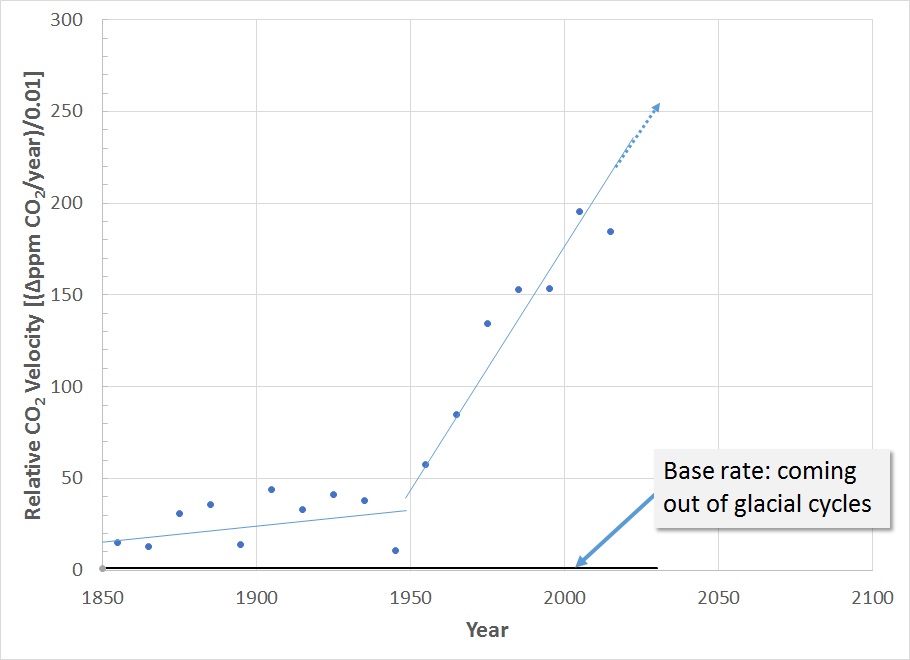
Speed Kills
Deceleration from 60 mph to 0 in …
It is not only the CO2 concentration that is important, but the annual rate of increase of CO2 concentration, because the rate of increase determines the rate at which natural systems must adapt … or go extinct.
For 1 million years life on earth has adapted itself to going into and out of ice ages (i.e., glacial cycles) over approximately 100,000-year cycles. We come out of ice ages in about 10,000 years, with CO2 rising 100 ppm in that time. That is a rate of increase of about 0.01 ppm/year. If we use this as a typical rate to which nature has adapted, and has done so already for at least 10 cycles, then we can determine how much faster than this we are now moving. The idea is that if we limit CO2 rise to this rate, we expect nature will adapt; the further away we move from this base rate the more difficulty nature will have adapting.
To get some perspective on how rapidly CO2 is currently increasing relative to the base rate coming out of ice ages, we define V_CO2 as the annual rate of increase of CO2 relative the rate of increase of 0.01 ppm/year. By this definition V_CO2 = 1 corresponds to the rate at which we come out of an ice age. A value of 10 means we are pushing nature 10 times faster than this base rate. If we use the start of the industrial revolution as the beginning of rapid CO2 rise, we can divide the data into two groups: pre- and post-1950. Plotting linear functions to 10-year averages of V_CO2 (to smooth out annual fluctuations) for each group yields the following plot.

Even before the age of big oil and coal, we were already pushing nature more than 10 times the base rate. The rapid industrialization sparked by WWII marked a rapid increase near 1950 that has continued, unabated, yielding a rate now more than 100 times the base rate.
This is comparable to the effect of running into a parked car, and if left unchecked, we may soon be running into a brick wall.
Posted by Evan on Wednesday, 19 April, 2017
 |
The Skeptical Science website by Skeptical Science is licensed under a Creative Commons Attribution 3.0 Unported License. |